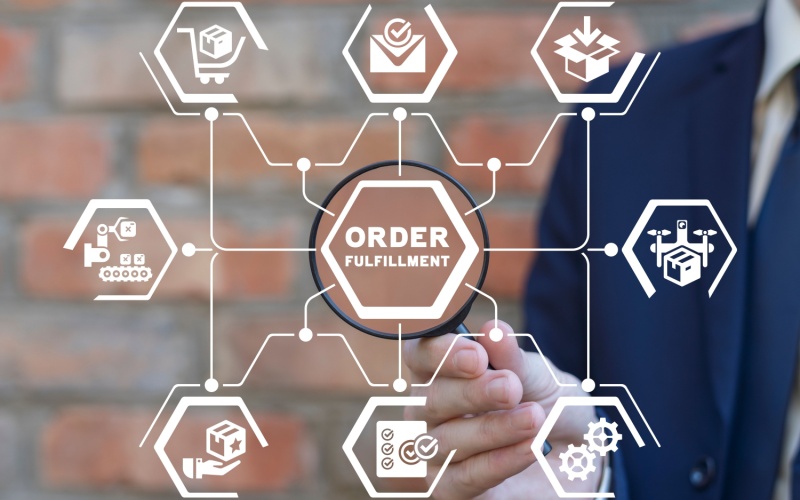Supercharging Fulfillment for a More Efficient, Customer-Centric Supply Chain
It’s easy to think about fulfillment as comprising the final steps in the supply chain, but the truth is that the conditions faced in warehouses and delivery vehicles are determined much earlier in the supply chain than in the last mile, so to speak. Supercharging fulfillment works in concert with accelerating plans, amplifying experiences, and building trust to orchestrate a synchronized supply chain with an end-to-end approach.
Fulfillment represents the most cost-intensive stage of the retail supply chain, so it would be strategic for supply chain professionals to consider the margin-widening powers of an end-to-end approach that optimizes the supply chain in a holistic rather than siloed way. This way, exponential potential in the retail supply chain can be unlocked.
Uniting People and Technology To Serve Customers Faster and More Efficiently
Exponential potential is not unleashed by adopting a fragmented patchwork of integrated point solutions. Rather, the entire supply chain from planning to execution needs to be harmonized around a singular outcome. Adopting a customer-centric approach can help achieve this.
While the customer has always been at the center of the retail supply chain, recent fulfillment trends indicate that customer-centricity has never been more essential to success. Although trends like omni-channel ordering, automated inventory management, real-time order visibility, and same-day delivery bloomed in an era when most customers were spending most of the day at home, the demand for these trends has not diminished. Just like remote work, faster fulfillment times are here to stay.
Initiatives that satisfy consumer demand for faster delivery times while internally improving efficiencies and handling disruptions are, therefore, a high priority for supply chain professionals. To create a truly customer-centric supply chain, the focus should be on creating a unified ecosystem that runs on a common platform, ensuring universal visibility of the same data and access to the same resources across an end-to-end supply chain.
With solutions like this in play, supercharging fulfillment for a more efficient and customer-centric supply chain is not just a great idea, it’s a tangible reality.
The Impact of Warehousing and Resourcing Trends on the Retail Supply Chain
The seemingly universal demand for more efficient order fulfillment has effected profound changes in every silo of the supply chain — many are positive, while others create novel challenges. For instance, increasingly dissatisfied shoppers have to share precious aisle space with in-store pickers, and then navigate roads that are more congested with delivery vehicles than ever before. Similarly, store staff are encountering their own frustrations about sourcing items for online orders in addition to their existing responsibilities.
Furthermore, it looks as though the labor shortages that characterized 2023 are not letting up any time soon. According to the National Retail Federation (NRF), there were four million retail job openings in the 12 months before January 2024. “That shortage of workers is not likely to ease dramatically in 2024,” warns the NRF. “Earmarking capital for technology that aids in scheduling, hiring, and training is suggested as a solution to this challenge, which is not set to be resolved soon.”
Overall, it’s clear that supply chain professionals must prepare for a future with continued disruptions to labor availability in warehousing and resourcing. However, with the right end-to-end technological solution in place, staying prepared to take on any future disruptions has never been simpler. The answer lies in automation.
Automation Is the Key to Supercharging Fulfillment
Automating logistics and warehousing operations can supercharge speed and responsiveness in the retail supply chain, a transformative power that modern retailers would do well to recognize. When we talk about automation here, we’re speaking about a multifaceted realm that goes beyond robotics. Advanced automation merges multiple technologies for smart, independent decision-making and marks a new era for supply chain management where machines and algorithms work in harmony to streamline processes from end to end.
By 2025, modern retailers plan to automate 70% of their routine tasks and prioritize investments that will enhance operational efficiency, reduce costs, and gain higher profits. By adopting this approach, they achieve significant improvements in various facets of their operations:
- Modernized operations and enhanced efficiency: Automation modernizes operations while enhancing efficiency and honing precision. This sets new industry standards, reduces costs associated with human error and labor, and impacts the bottom line.
- Smarter supply chain operations: Automation facilitates agile and strategic decision-making through data analysis, keeping pace with rapidly changing market dynamics.
- Future readiness and resilience: Automation ensures seamless operations and builds resilience against disruptions, fostering sustainable growth and paving the way for future industry leadership.
Supercharge Fulfillment With an End-to-End Solution
Adopting an end-to-end approach to the supply chain destroys siloed thinking and creates universal oversight of enterprise data streams. For a more interoperable and profitable supply chain, retailers must consider how to fuel fulfillment for a more fulfilling customer experience.
Schedule a strategy call with a Blue Yonder expert today. They’ll explain how simple it is to implement and scale an end-to-end solution that transforms the supply chain from a disparate cluster of siloes to a cohesive, collaborative structure.

